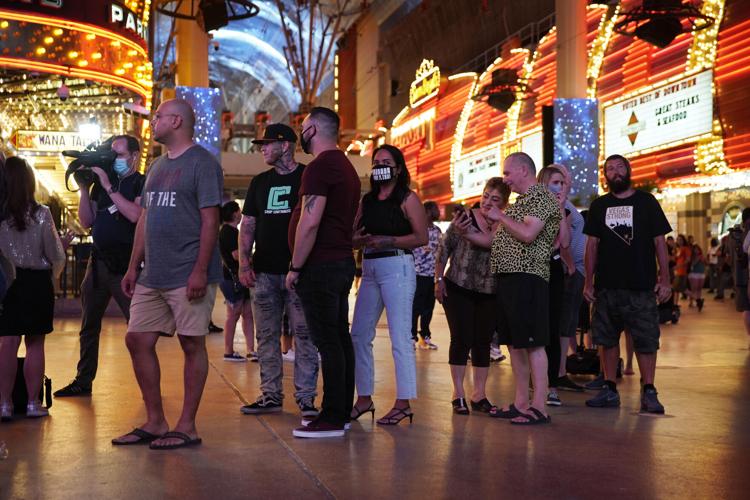
People wait in line to enter after the reopening of the D Las Vegas hotel and casino Thursday, June 4, 2020, in Las Vegas. Casinos were allowed to reopen early Thursday after temporary closures as a precaution against the coronavirus.
AP Photo/John Locher
(Michael McGrady) – As Nevada’s cities begin to gradually reopen after the state’s COVID-19 stay-at-home order, Gov. Steve Sisolak says that much progress has been made in five metrics that were identified in April.
Gov. Sisolak’s office said that as of June 3, Nevada has witnessed a “downward trajectory in positivity rate” of COVID-19 with a positive test rate of 5.7 percent. This is down by 12 percent, which was reported on May 1.
The World Health Organization recommends 10 percent positive infections, the statement noted. A downward trend is also confirmed for COVID-19-related hospitalizations that have declined for a total of 43 days since April.
After the national shortage of personal protective equipment, known as PPE, the state and the Nevada Hospital Association report supplies in healthy numbers. Statewide testing has also increased daily to 500 percent with expanded laboratory testing capacity for all cases and samples.
“This data reflects the hard work and dedication of Nevadans throughout this great State who have taken the threat of this virus seriously, banded together as a community and have taken proactive, measured and necessary steps to flatten the curve of this virus, protect our healthcare systems and allow Nevada to slowly begin to reopen its communities and the economy on the path to a new normal,” Sisolak said.
Contact tracing efforts, Sisolak added, are also expanded and are yielding results. For instance, Sisolak also announced a 32-page management plan to further formalize crisis management and disease monitoring for future pandemics. Efforts also include private-public partnerships with Deloitte Consulting and sales software giant Salesforce to run a digital tracing solution.
Sisolak additionally noted that Nevada is only one of four states to have identified pandemic weaknesses in nursing homes and to meet federal injection control standards for such facilities.
By


Facebook
Twitter
Pinterest
RSS